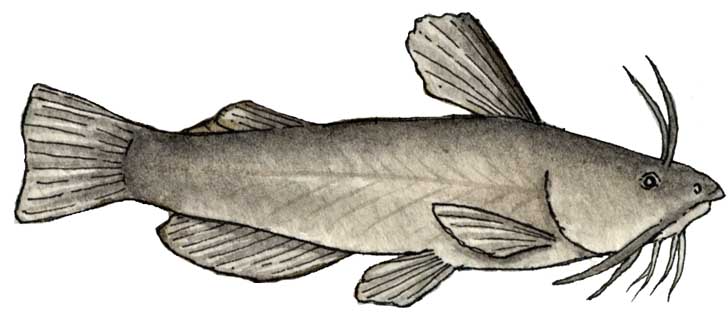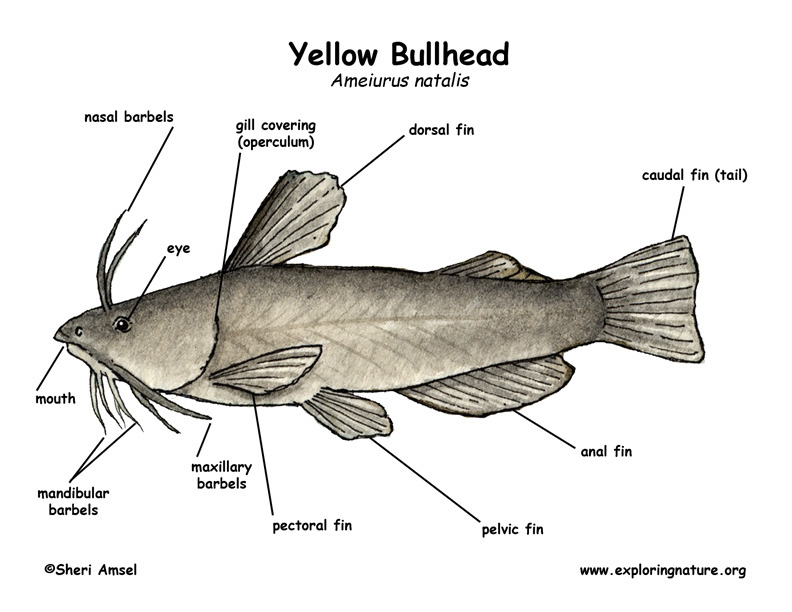

They were found from southeastern Canada through the eastern U.S. and through the Midwest, but have been introduced more widely throughout the country.
They prefer to live in the shallows of slow moving rivers, streams, lakes and ponds, but can be found in faster water as long as there is plant life growing on the bottom. As hatchlings they will school in water plants to hide from predators. As adults they live on the bottom in the muck looking for food.
They do not get as large as some catfish, usually just reaching about a foot long and weighing a pound. They vary in color from grayish brown to yellowish green and are lighter below. They have a rounded tail and do not have scales like other fish. They have 4 pairs of whiskers called barbels – one pair on top of the nose called nasal barbells, one pair on the outside of the face called maxillary barbels and 2 pairs under the chin called mandibular barbels. The barbells are for tasting and feeling. They are covered with thousands of taste buds.
They are active at night (nocturnal), feeding on the bottom. They are social fish and will feed near other bullheads. If bothered they will stab with a poison spine in their pectoral fin. The poison is not deadly, but does cause pain.
They are both carnivores and scavengers eating anything they can find on the bottom including plants, animals (minnows, worms, insects and crayfish), and dead things (carrion).
Males dig a hole in the mud for a nest in the spring. They make sure the nest is protected by a large rock, sunken log, or thick water plants. Females choose a male by the safety of the nest they’ve made and spawn only once a summer when the water is warm enough – over 70°F. The female will lay up to 7,000 eggs in the nest and the pair guard it. Once the eggs have hatched the males will guard the fry through the summer.
Kingdom: Animalia
Phylum: Chordata
Subphylum: Vertebrata
Class: Actinopterygii
Order: Siluriformes
Family: Ictaluridae
Genus: Ameiurus
Species: natalis
When you research information you must cite the reference. Citing for websites is different from citing from books, magazines and periodicals. The style of citing shown here is from the MLA Style Citations (Modern Language Association).
When citing a WEBSITE the general format is as follows.
Author Last Name, First Name(s). "Title: Subtitle of Part of Web Page, if appropriate." Title: Subtitle: Section of Page if appropriate. Sponsoring/Publishing Agency, If Given. Additional significant descriptive information. Date of Electronic Publication or other Date, such as Last Updated. Day Month Year of access < URL >.
Amsel, Sheri. "Bullhead (Yellow)" Exploring Nature Educational Resource ©2005-2024. December 13, 2024
< http://www.exploringnature.org/db/view/Bullhead-Yellow >

